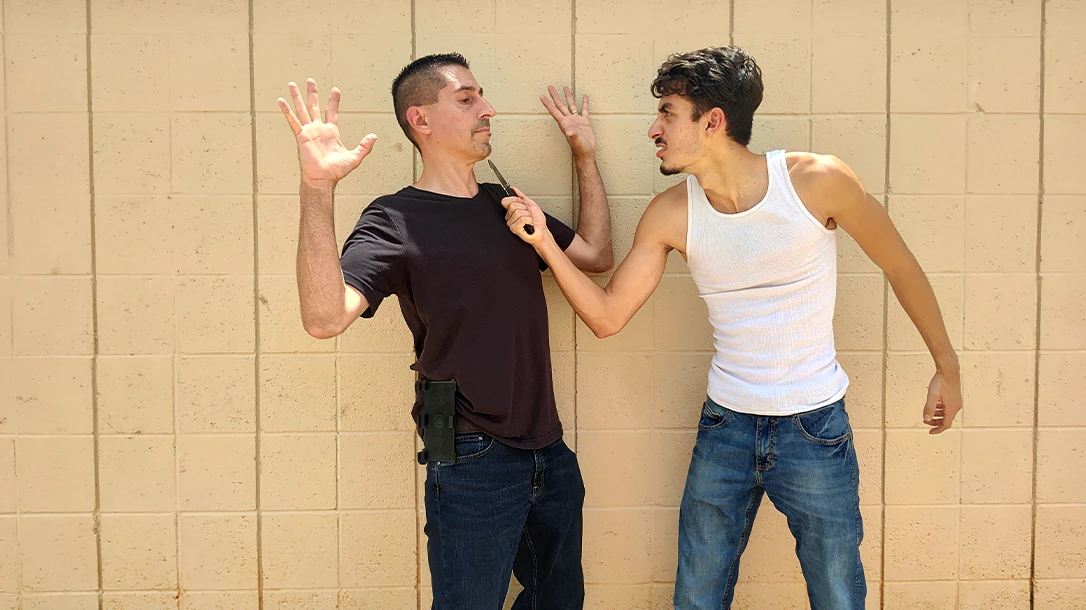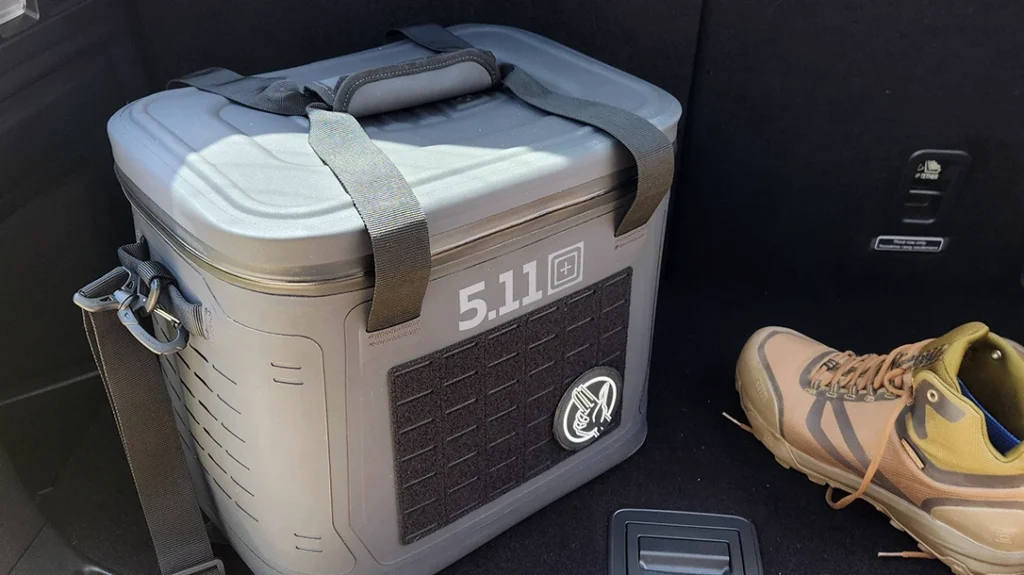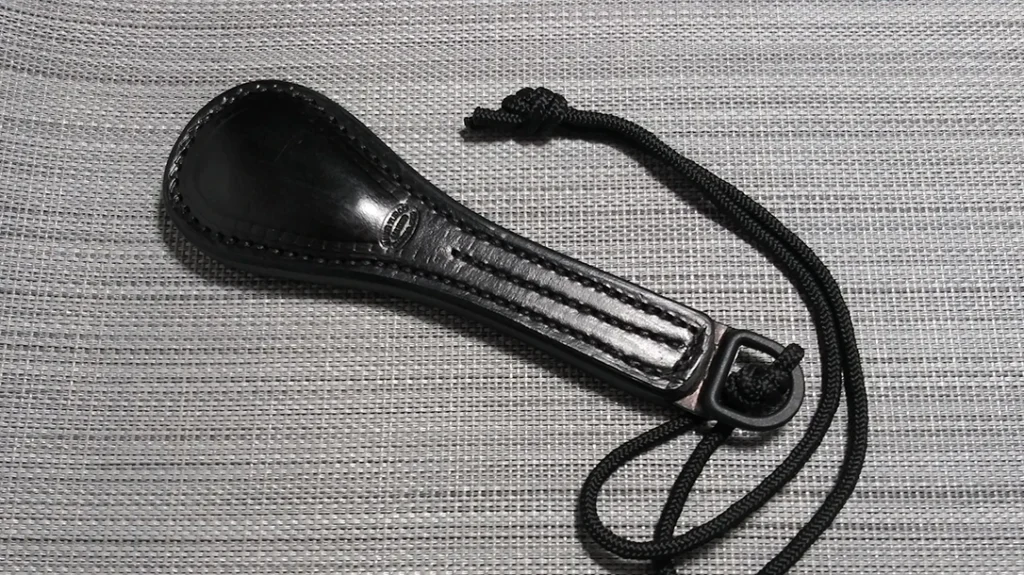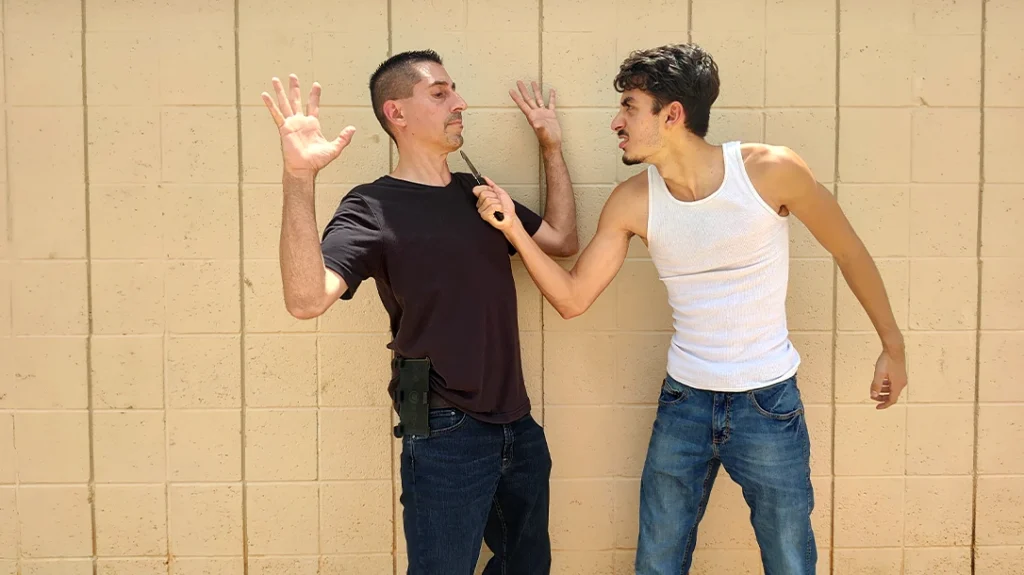Few things in life are less scary than a sharp knife forcibly pressed up against your skin. Unfortunately, if you are in the wrong place at the wrong time, this could very well become a reality. Knives are available everywhere, and if a “bad guy” threatens you with one, your life could be at stake. But this doesn’t mean you have to be a defenseless victim. There are viable self-defense techniques that you can employ to either control your assailant’s weapon or remove it from the conflict altogether. Here you’ll learn the dos and don’ts of knife defense and, most importantly, how to make it home alive.
Knife Defense Tactics are a Last Resort
When dealing with a knife or other weapon, the most important thing to remember is only to use a self-defense technique as a last resort. Your wallet, car, or other valuables are never worth you getting injured or killed. These things can be replaced; you cannot. Even with the best training and optimal situation for you, there is always a good chance your technique will fail.
No technique is perfect, and you expect to get cut in some way if you attempt one. However, with that being said, if you feel that your attacker will follow through with their threats no matter what you surrender to them, then it’s go-time. You need to commit one hundred percent to the defense and don’t let up until the situation is under your control. More on this later.
Advertisement — Continue Reading Below
Appearing Innocent & Harmless
If you’re taken by surprise and an assailant presses a knife towards you, you need to remain both calm and compliant with their demands. If you act tough, start yelling, or sling insults their way, all you’re going to do is make a bad situation much worse. They may see you as a “problem” they need to take out, or will immediately stab or cut you if they feel threatened.
Instead, stay calm and assess the situation. Put your arms up and keep your hands open to show you’re not aggressive towards them. As you’ll learn later, this act of “giving up” will become an advantage for you. The key is to act as harmlessly as possible towards your attacker. But don’t worry, you’ll get your chance to defend yourself very soon.
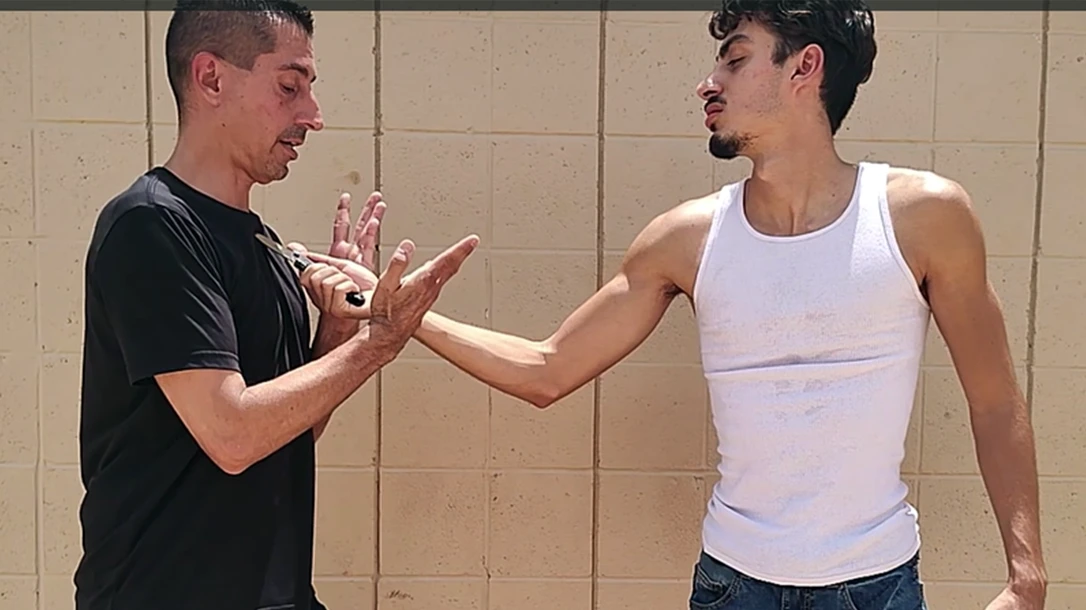
Advertisement — Continue Reading Below
No Hesitation, Just Reaction
Now, with any technique in any self-defense situation, it’s either you commit one hundred percent, or you don’t do the technique, simple enough. Hesitation, lack of energy, or stuttering in motion won’t get the job done and can only make the situation worse. The assailant can fight back with cuts or stabs coming your way, or an all-out fight in which you don’t make it home alive.
Your sudden burst can take an attacker by surprise, and that’s precisely what you want. You want them confused and under a barrage of countering moves by you. Hopefully, afterwards, the knife will be in your possession, and you’ll be in control of the situation.
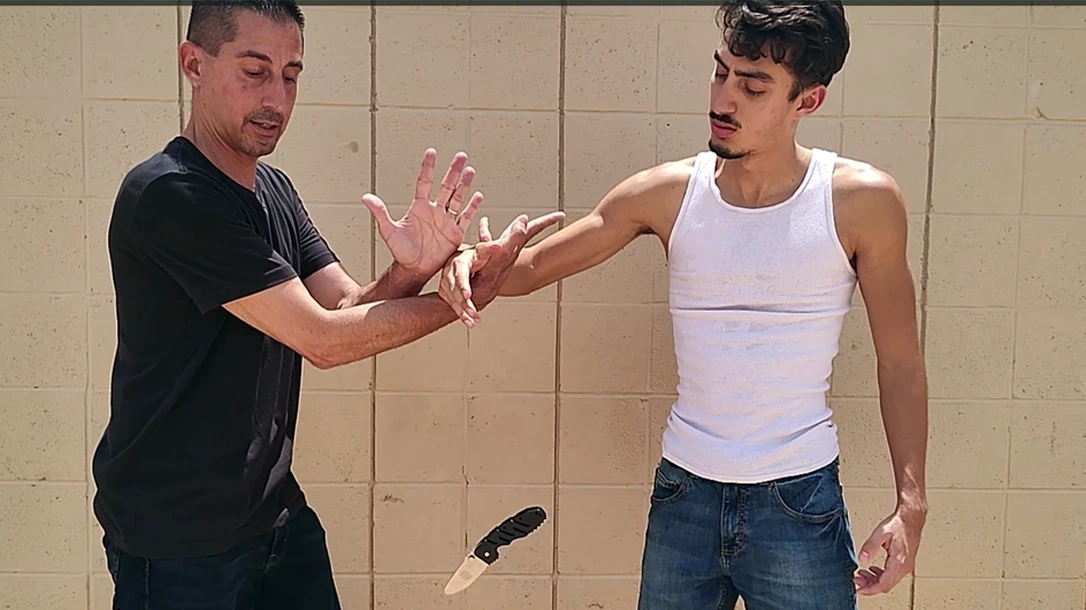
Advertisement — Continue Reading Below
Controlling the Weapon is Key
With any knife attack scenario (and any other weapon, too), your main objective is to control the weapon from start to finish. Controlling the weapon takes many forms. It could mean that you secure the weapon from the attacker, and it’s in your possession. It could also mean that you are controlling the attacker’s weapon-holding hand and not allowing them to use it against you.
Finally, controlling the weapon could mean that you take it out of the conflict altogether, and it’s no longer available to use by either you or them. No matter which scenario comes to fruition, you need to track the knife from the beginning of your technique to the end and always know where it is physically. The best techniques available are essentially useless if they don’t take into account the control of the weapon itself.
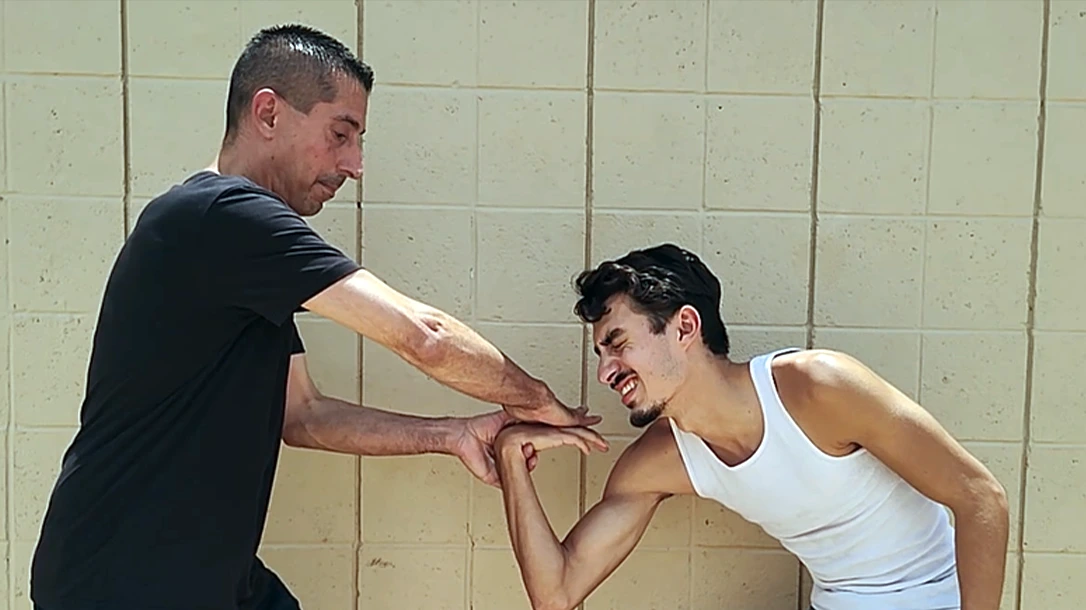
Advertisement — Continue Reading Below
The Finisher Doesn’t Matter
Many self-defense and martial arts techniques either end in a takedown, throw, or lock. However, when dealing with a knife-armed assailant, the ending doesn’t really matter as long as the threat of being cut or stabbed is thwarted. If you are in a position to overcome your attacker, then do so. But if the opportunity has passed, don’t carry on the conflict. Just flee the area and call the local authorities to report the incident. There is absolutely no need to put yourself in danger after you essentially dodged a bullet, or in this case, a sharpened piece of steel.
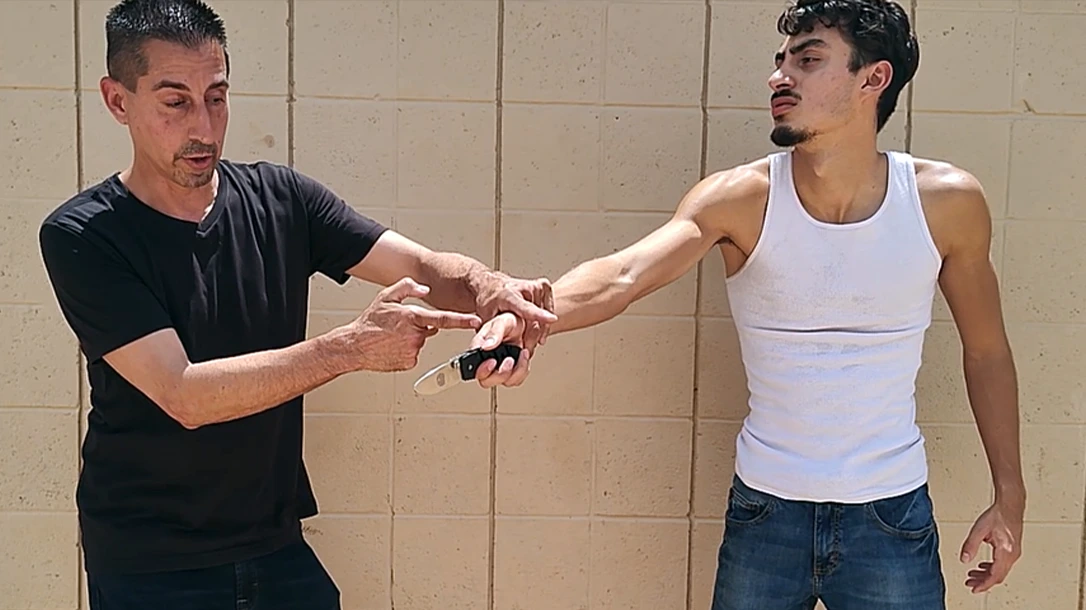
Practice, Practice, and More Practice
As mentioned earlier, even with years of experience, successfully disarming an attacker is not a guarantee. If you think you can do just that with little to no hands-on training, you’re going to have a big surprise and not in a good way. Knife disarms need to become second nature, done without thinking, and with a full commitment behind your technique. Constant training is required, and with partners of different heights, weights, builds, and (mock) aggression. If you don’t put in the time, the results will become apparent the next time some scumbag points a knife your way.
Advertisement — Continue Reading Below
